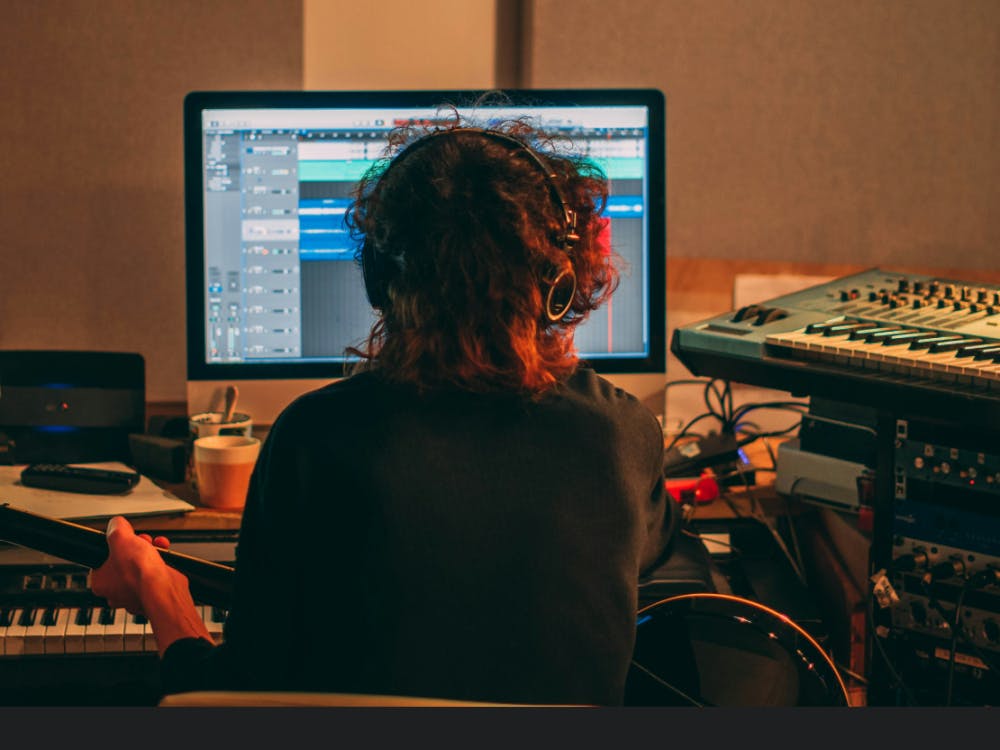AI choir sections are harmonised vocal layers generated by artificial intelligence that turn a single recorded voice into multiple realistic parts. These systems analyse tone, phrasing, and pitch to create complementary voices that sound like a real group performing together. Producers love them because they replace the need for multiple vocalists or complex recording sessions, saving time and budget while keeping a professional sound. AI tools let you experiment freely with tone, range, and emotion, offering creative flexibility unmatched by traditional workflows. This mirrors the evolution of AI in vocal production, which now helps solo creators and engineers produce complex vocal arrangements that once required an entire choir.
How Can You Easily Create AI Choir Sections in Your DAW?
The easiest way to make AI choir sections is by using plugin-based AI vocal tools that integrate directly into your digital audio workstation. These plugins automatically generate harmonised voices and blend them naturally with your mix. SoundID VoiceAI is one of the most accessible options, featuring Unison Mode that produces up to eight natural-sounding double tracks from one vocal take. You can mix and match over 50 vocal presets, each designed to emulate unique singer characteristics. The plugin’s local processing ensures unlimited use, while optional cloud rendering adds extra precision for complex projects.
Alternatives like Synthesizer V or Vocaloid offer deep control but require more programming knowledge. In comparison, plugin-based tools deliver fast, musical results right inside your session. A 2024 analysis by MusicTech notes that AI-assisted vocal layering has become one of the top three use cases for AI in home studios worldwide.
How to Record Vocals for the Most Natural AI Choir Sound
Begin with a clean, dry vocal take recorded without reverb or heavy processing. AI models need clear, monophonic input to analyse pitch and timbre accurately. Keep your performance within a natural range (around G3–G4) to avoid artifacts or distortion. If you’re building multi-part harmonies, record separate takes for each voice part instead of duplicating the same one. Natural timing and pitch differences between takes make your AI-generated choir feel human.
When configuring your plugin, adjust pitch variance around 30–40% and moderate timing variance to achieve a lifelike feel. Spread harmonies with stereo width controls to create depth while keeping the lead vocal centred. EQ and compress each generated voice separately before applying consistent reverb to tie them together in the same acoustic space. A subtle, short room reverb adds presence without washing out clarity.
What Mistakes Make AI Choirs Sound Unnatural?
Copying and pasting the same vocal take across different presets is the most common error. Even with AI variation, identical phrasing creates robotic results. Each part should come from a unique take or timbral variation. Another mistake is processing vocals heavily before AI transformation. Reverb, pitch correction, or distortion can confuse the algorithm and produce unpredictable tones.
Stay within human vocal ranges to preserve realism. Extreme pitch shifts or mismatched presets can create an artificial sound. Choose presets that match your song’s mood—soft and airy tones for pop, cinematic layers for epic productions, or darker textures for electronic music.
How to Mix AI Choir Vocals So They Sit Perfectly in Your Track
Treat each AI-generated voice like a real singer. Start with a high-pass filter around 100–200Hz to remove low-end buildup. Use EQ to carve space for your lead vocal’s fundamental frequencies and add gentle compression to balance dynamics without flattening them. Reverb plays a major role in realism—apply a unified room reverb across all choir voices to place them in the same space. Use automation to bring harmonies forward during choruses and subtly reduce them during verses for dynamic contrast.
Stereo placement enhances width and dimension. Keep lower harmonies closer to centre and higher ones wider. A mix that breathes and moves feels more believable to the listener. Layering AI harmonies beneath real vocals can also yield hybrid textures that sound emotionally authentic.
Why AI Choir Creation Is Transforming Modern Vocal Production
AI choir creation combines human performance with intelligent sound modelling. Tools like SoundID VoiceAI empower producers to build lush, natural-sounding choirs directly inside their DAW without complex setup or external processing. As algorithms improve, AI-generated vocals are moving closer to emotional realism and human nuance, enabling new creative dimensions in music production.
If you’re ready to explore AI-driven vocal harmony creation, start your free 7-day trial of SoundID VoiceAI — no credit card, no risk, just pure creative freedom.



